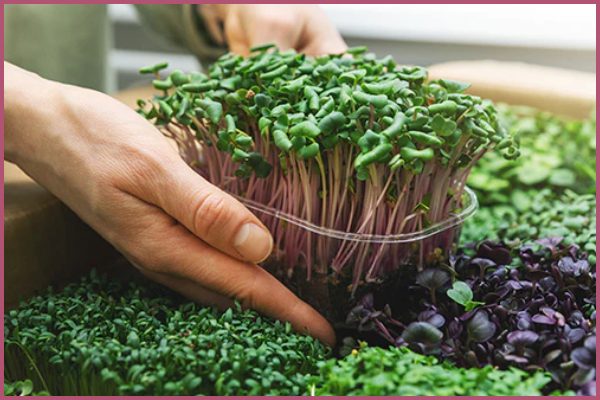Be ready to learn your new culinary adventure with the best microgreens to grow for nutrition flavor, and visual pleasure
Let’s learn about microgreens, their benefits, ways to grow them, and their harvest time.
What are microgreens?
The word microgreens comprises two words: micro and greens. Microgreens are young seedlings of herbs and vegetables that are edible. Other bigger vegetables and herbs take weeks or months to grow. However, microgreens can be harvested and eaten a week a week to 10 days after the cotyledon leaves have developed.
Talking about the size of these tiny versions, they only grow up to a few inches and have 50 to 60 different varieties. Because of their higher costs, people could initially see them on fancy dinner plates and boutique grocery stores. After harvesting, one needs to have fresh soil and a sterilized container or growing mat to grow new microgreens.

Now that people can grow these veggies at home, the use of microgreens has expanded. We can use them on various dishes from salads to sandwiches.
It is necessary not to confuse microgreens with sprouts. While sprouts are grown in water and take only one or two days to produce underdeveloped leaves, microgreens grow in soil and sunlight and take at least a week to grow leaves.
Here are the top 10 microgreens that you can easily grow at home:
1. Sunflowers
Sunflower microgreens are some of the easiest and best microgreens to grow at home as they are super convenient and speedy. If given the right conditions, they get ready to harvest in less than a week.
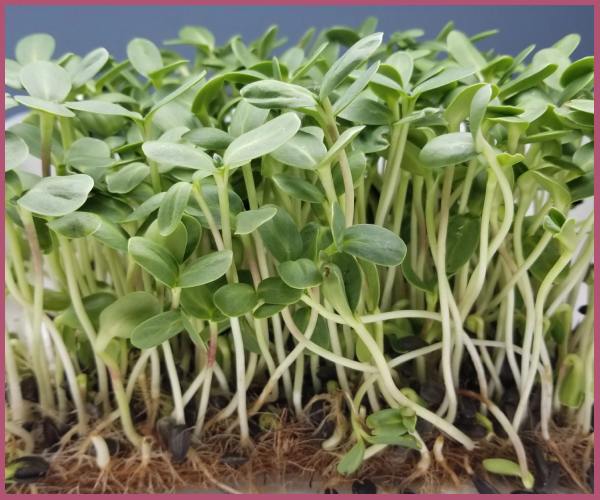
You can get sunflower seeds from garden centers or supermarkets at an affordable price. All you have to do is soak them overnight before planting and make sure none of the seeds overlap when you sow them in the tray. After harvesting, you can enjoy these robust little greens that have a nutty flavor.
2. Radish
Another great low-maintenance indoor plant for the first-time microgreen gardener is radishes. They will add a hot-peppery flavor sprinkled over a salad or stir-fry.
These seeds require darkness to germinate so cover the container over for the first three days after sowing or until you can see better sprouts. Since the seeds are very small, you need to be able to pack enough into a container.
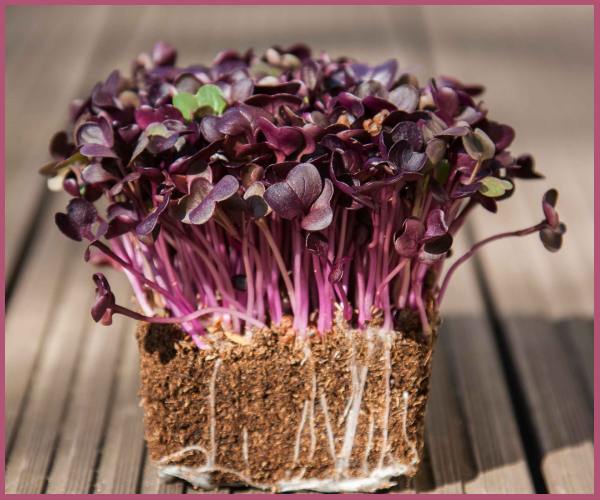
When the microgreens reach about 2-3 inches tall, you can harvest them.
Nick Greens, an expert in indoor agriculture and microgreens says, ” The best times to harvest your microgreens are during the early morning or evening. If you harvest during these times, your microgreens are more likely to be fresh and healthy.”
3. Pea Shoots
Those who know how to grow peas in the garden know that it will take them around three months to enjoy the fruits of their labor. Luckily, that is not the case with pea shoots which will give you all the fresh pea flavors bursting from their tender green leaves, sometimes in less than two weeks.
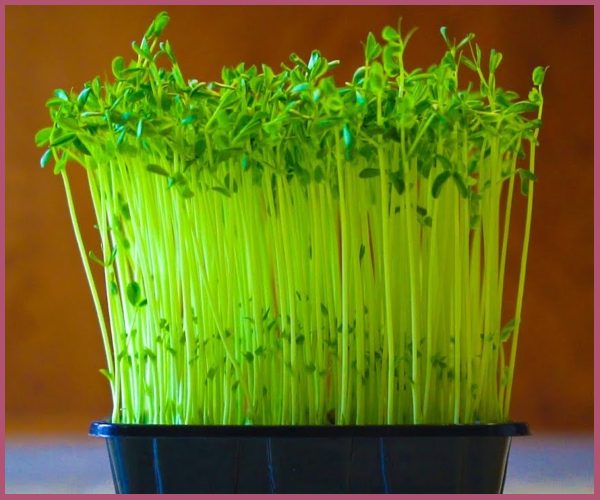
As the seeds are large, you have to soak them before planting. You might also need to refill the bowl since they are very thirsty. After that, you need to sow them in a shallow tray with a little compost spread over the top.
When your harvest grows 3-4 inches tall and has its first real leaves, you can snip them. If you just took the top leaves and left the rest, you can get your second harvest within a few days.
4. Wheatgrass
Wheatgrass is one of the favorites of the world of natural health and for all the good reasons since it is packed full of vitamins A, C, and E, as well as iron, magnesium, and calcium.
You need to rinse and soak the seeds as per the packet instructions. Layer the top with compost and cover with a thin white cloth.
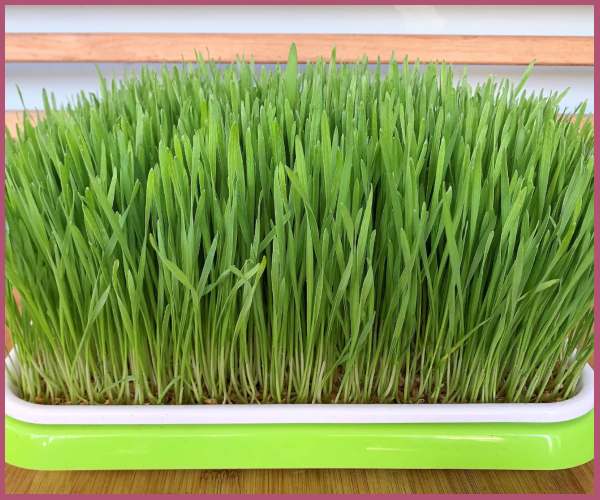
Keep the soil moist as they germinate and remove the cloth once they start poking their heads up. Make sure to keep them in a well-ventilated spot.
Just in a few days, they will get 6in tall and then you can snip them off and use a handful into your breakfast smoothie.
5. Beets
Beets are particularly famous as chefs’ favorites as their vibrant purple stems and green leaves make for a beautiful tasty garnish for almost any savory dish.
When growing beetroot microgreens, sprinkle the seeds liberally over the damp compost. Keep them in a dark spot for around 5 days until they germinate. You also have to make sure that the soil doesn’t dry out.
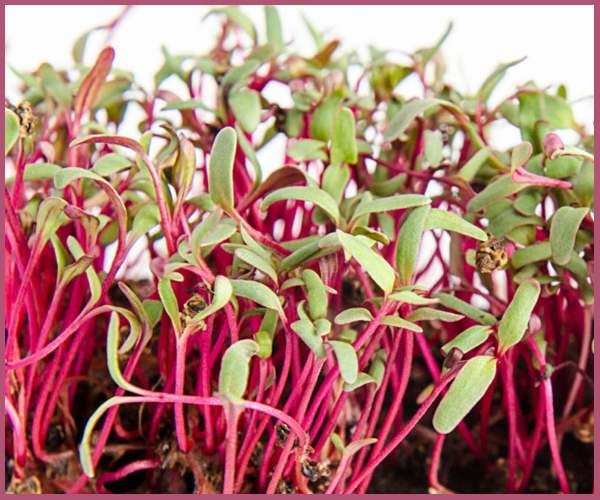
You need not worry if you see them a little squashed or yellow initially, they will soon be glorious green once they get to see the sun. After 12-15 days, you can harvest them and savor their fresh, earthy flavor.
6. Basil
Unlike speedy sunflowers, basil needs some time to grow. If it gets a sunny spot, they should be ready for harvest three weeks after germination.
One of the best herbs to grow indoors, there are a lot of different types of basil, from the common sweet variety to the spicy aniseed of Thai sweet basil and the clove taste of purple basil.
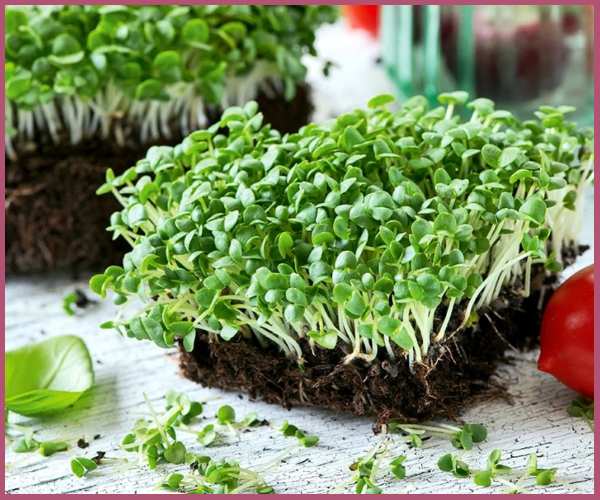
One great thing is that the basil microgreens taste the same as the grown-up plants. It’s high time you grow a variety and see which one you like the best.
Trim the leaves and sprinkle over your pizza or rolls.
7. Broccoli
Broccoli sprouts are super easy to grow on a sunny windowsill and good for beginners. All you need to do is sow the seeds into a damp compost and lightly cover them with an extra sprinkle of soil, they should germinate in no time.
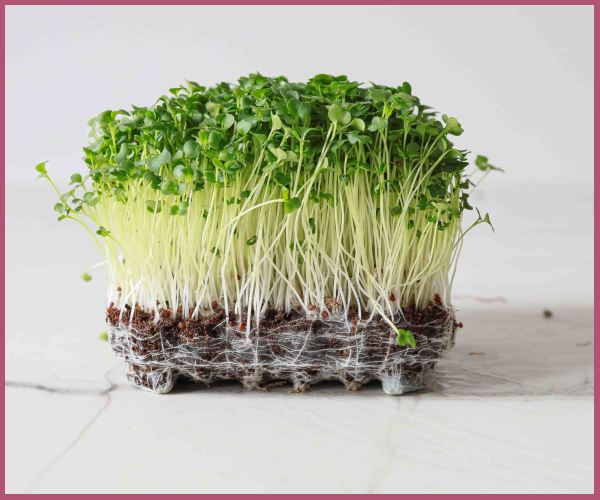
They are ready to snip once you see leaves on them. It is yummy in an omelet or frittata.
8. Arugula
One of the easiest to grow vegetables, Arugula microgreens are also easy and speedy to grow and it full of a flavor punch too. It’s a nice way to use up seeds if you have an outdoor garden. Just make sure the compost has enough moisture before you sow and pat it down gently.
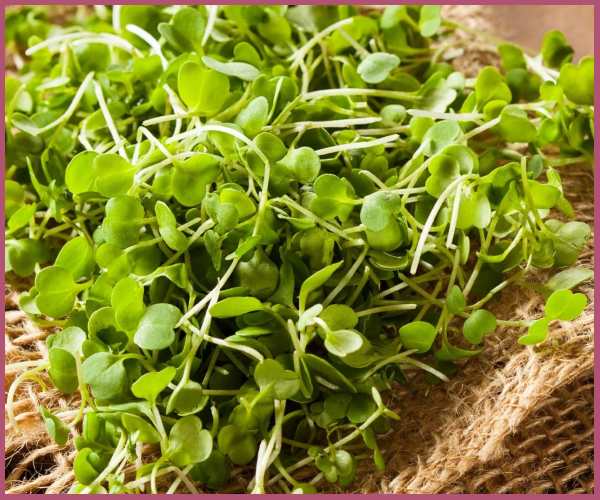
Cover them with a lid and leave them in a dark corner until the seedlings start showing leaves. Only water them once bigger.
When they grow up to 2-3 inches tall, harvest them. They are a great alternative to lettuce in a salad.
9. Rainbow Chard
While outdoors, chards are a great small vegetable garden idea, they can be grown indoors at any time. Rainbow chard is a mixture of different varieties of microgreens in the same packet. As they grow, their stems will look like a tiny multi-colored forest.
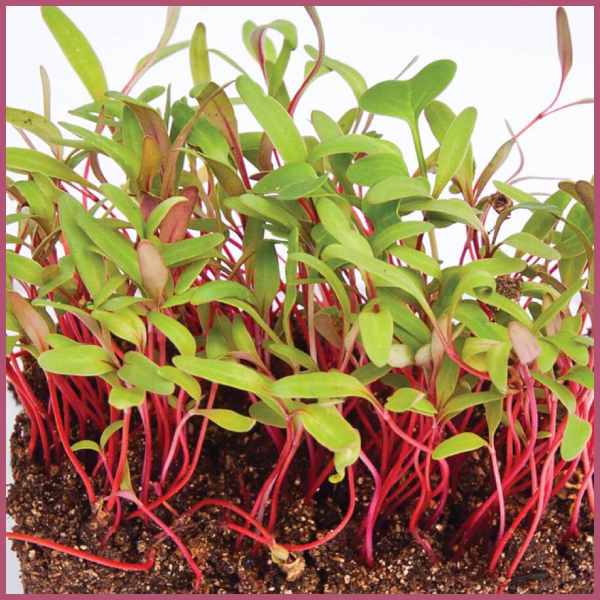
You require some patience to grow chard microgreens particularly while watering them as they are delicate and prone to collapse if drenched from above.
After sowing the seeds, cover them with a light layer of soil and put a lid over them to keep out the light until they fully germinate.
10. Carrot
Just like carrots, these fluffy greens look cute and taste mild, sweet, and earthy. While they are at the more challenging end of microgreen gardening, it is worth it.
Since their seeds are tiny, spread them across in a densely packed form that does not overlap. They will need to be kept alone in the dark for 5-7 days to germinate.
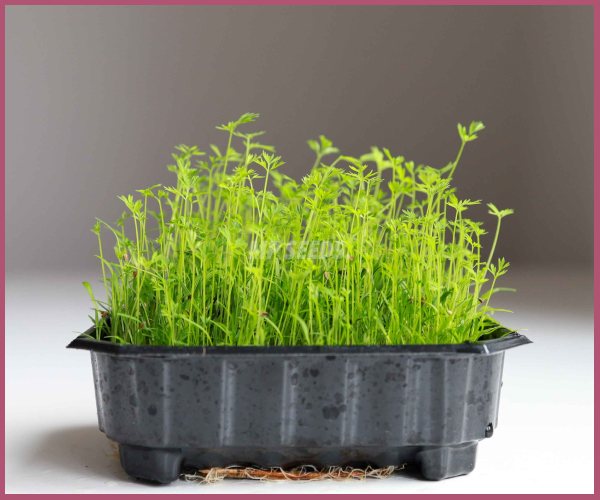
Mist the baby carrots or put the shallow container in water letting it soak up from underneath.
You can harvest when the first true leaves form and enjoy.
You may also want to check out this article: 6 Common Indoor Plants Care Mistakes You’re Making, And Tips to Avoid Them
